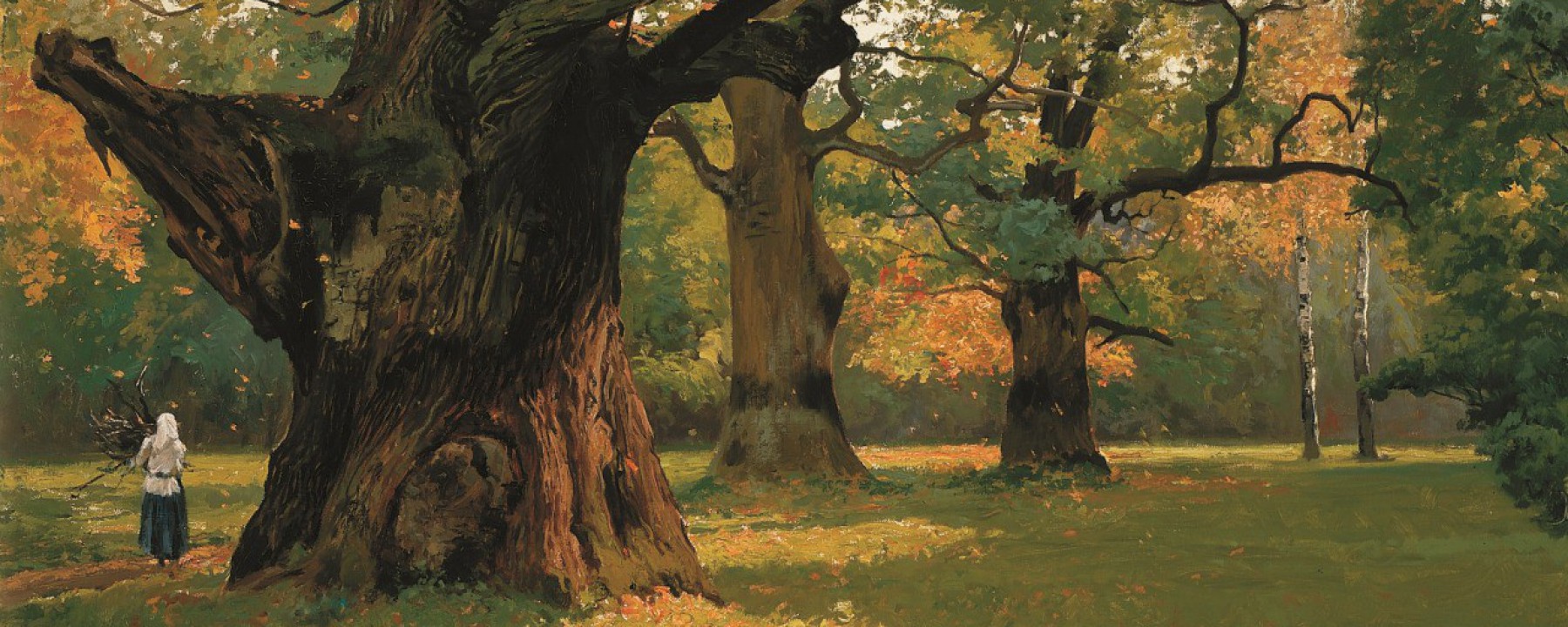


The feast of Green Week (Zielone Świątki) is celebrated in Poland around mid-May towards early June – it’s syncretized with the movable celebrations of Pentecost that starts 50 days after Easter. These festivities show many elements of pre-Christian Slavic spring rituals.
Green Week is connected to Slavic rituals of celebrating the full spring and the reborn greenery (the nature fully reborn after winter) after all the tree branches had already turned green. Its core nature is a form of maintenance of the rhythm of the nature, with magical practices of purifying the surroundings from demons or evil spirits that might have an effect on the further process of growth towards the end of spring. Goal of these rituals was designed to boost nature’s fertility, the ability to grow, and to prepare the soil, crops and livestock for the upcoming summer season and the later (expectantly abundant) harvest.
Birch-tree is particularly important in these celebrations, considered one of the most sacred trees in the Polish folklore (more about it in Polish here). It’s a symbol connected to ancient female aspects of the universe, regarded a symbol of fertility, youth and of powerful life. Birch-tree was very often used in old-Slavic rituals, particularly those performed by women who asked for vital powers, fertility and for a good start of a vegetation cycle or strenght in the natural cycles of a female body. Usage of the birch-tree in the Polish rural customs is extremely wide, and has no match among other trees.


Customs connected to the Green Week celebrated by the Polish people included for example:
- adorning houses, pathways and shrines with green branches (particularly of the birch-tree), herbs and flowers
- sweeping floors with a green birch-tree branch to ‘purify’ it
- scattering sweet flag / calamus on floors as a protective barrier
- adorning cattle with flowers and incensing them with sacred smoke (more about it here)
- rolling eggs around cattle’s sides in rituals of protection and of boosting the fertility (same ritual was performed for humans)
- burning bonfires around which joyful celebrations with dances and singing were organized
- walking with torches around crop fields to get rid of evil spirits and demons
- walking with so-called ‘gaik’ or ‘maik’ (branches decorated with flowers and ribbons, held on a long stick) – you can read more about it here
…and so on. Many regions have their own partly-unique customs or games connected to the Green Week. Some of the customs survived only locally or are recreated only by folklore or ethnography organizations. Moreover, some similar elements can be found in rural customs of not only Pentecost but also of the Corpus Christi – both these Christian holidays in Poland had been syncretized with certain old-Slavic spring rituals dated to a Slavic ‘full-spring’ festival over the past centuries.




Originally the rituals were linked to the Slavic festival called Stado (literally: ‘Herd’) – such name of ‘pagan’ festivities still celebrated on the Polish countryside was described in 15th-century manuscripts (Długosz’ Chronicle and a few suviving sermons). In the mentioned chronicle Stado is described as a feast organized in honor of the Slavic gods, and accompanied by songs, dances and sport activities. According to later documents, this feast was eventually ‘Christianized’ only in 16th or 17th century, however its pre-Christian elements are still alive in Poland nowadays, mostly detached from their original meaning. Informations about analogous Slavic spring feasts can be found for example in the medieval chronicle of Cosmas of Prague that describes a very similar feast celebrated by the early Czech people, dedicated also to ancestors, or in the sources mentioning the so-called Green Week or Rusalki Week that is celebrated among the East Slavs around the same time.
The Polish name ‘Zielone Świątki’ survived only in the traditions of the countryside and was eventually adopted by the Christian church as a synonym of Pentecost in attempts of erasing its separate nature. Usage of the word ‘świątki’ there is extremely interesting and doesn’t occur in any other name of Polish holidays. In the traditions of the Polish contryside this word is used only to describe sacred wooden sculptures, which are created locally by self-taught folk artists. These sacred sculptures show mostly Christian religious figures nowadays (most often it’s the Holy Mother or the Pensive Christ), but many ethnographers agree that they rather resemble old-Slavic ‘pagan’ sculptures in their shape and forms of adoration. Such ‘świątki’ are usually placed in wayside shrines or inside hollows in trees along rural pathways and roads, and very often ‘protect’ crossroads that have a deep sacred meaning in the Polish folklore and where both divination and invocations were uttered (read more: Polish folk beliefs). In a way, considering also the surviving informations about the Stado festival, the original meaning of Zielone (Green) Świątki could be then interpreted literally as a festivity dedicated to sacred sculptures (this is, the old-Slavic gods) that are turning green during spring (being decorated with green and blooming branches).
Rituals of clear old-Slavic origins found in the rural Green Week customs became incorporated into spring celebrations of Stado by Rodnovers (modern believers of the Slavic Native Faith).

My list of sources and book recommendations (in Polish only).

7 thoughts on “Zielone Świątki, so-called Green Week celebrated on Pentecost”